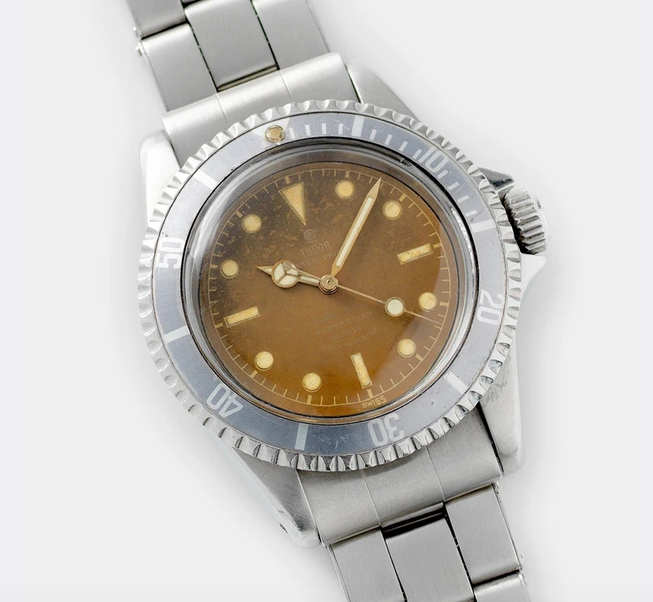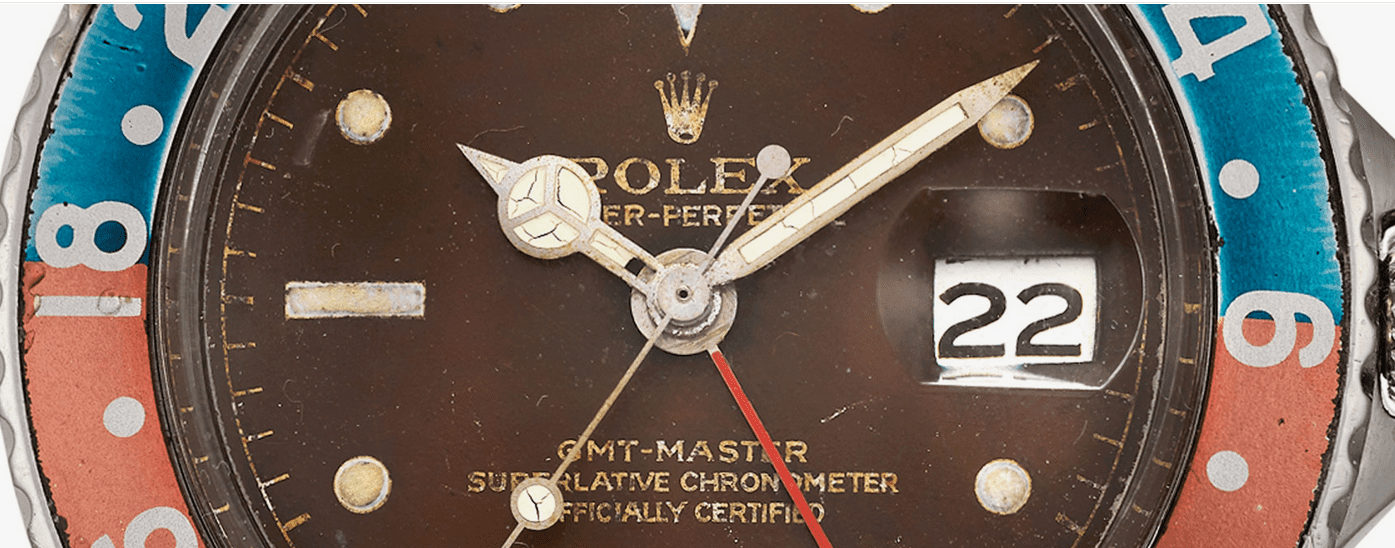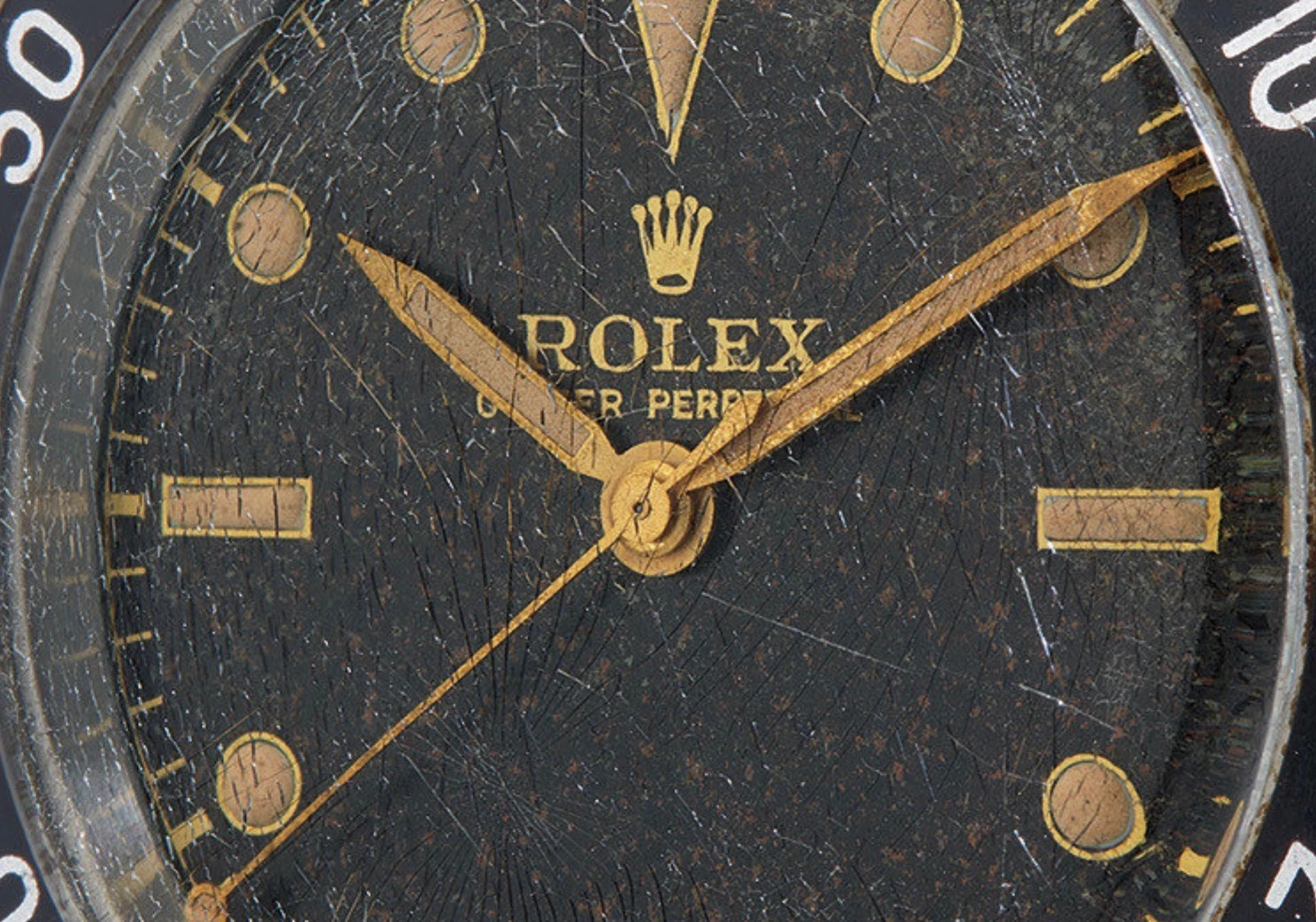OPINION: Let’s face it, patina is just a fancy word for damage
Time+TideEDITOR’S NOTE: Don’t get hoodwinked by the marketing spin of the vintage watch world. That’s the advice of Dan Kaufman, a veteran Australian journalist who got in touch with this thought-provoking column. If you’ve got a watch-related subject you’d like to get off your chest, drop us a line at: [email protected].
Let’s start by stating a simple fact: patina is a fancy word for damage. When sellers use the word patina, they’re in the same league as a real estate agent calling a studio apartment cosy. When they then call the patina tropical, you know the watch is truly messed up.
Don’t get me wrong: I love vintage watches. I love their size, their uncluttered dials, that even vintage sports models look dressy by today’s standards. I love the idea of wearing history on my wrist, which is why my favourite watch is a 1949 Tissot that belonged to my grandfather. And yet, with that watch, there’s a catch: namely it’s in bizarrely good condition. Although it didn’t keep time and the crystal was scratched, the watch didn’t have a single blemish. As such I simply had the movement repaired, replaced the crystal and, more controversially, polished it. If the dial wasn’t so pristine, I’d have restored that as well.
I realise if this were a valuable watch I’d have knocked down its value – and that polishing too much can ruin a watch’s lines. But it was meant to be an elegant dress watch and I suspect my grandfather would have wanted it to stay that way.
I also suspect we value the dings in our watches more than we ought to. For example, I recently had another watch serviced – and accidentally restored. It was a steel Oris I’d bought over 20 years ago, and was proud of the mighty dents in its case and lugs. Like a lot of watch owners, I told myself these dents had history, and so I made a point of telling the repairer to leave them alone.
Yet when I picked it up, all the dings had been repaired. At first I was upset, and the repairer – who genuinely seemed like a sweet guy – told me the ding repairs were free of charge and that he had to fix them, as it would have been a crime to leave them on such a nice watch.
Stunned by this response, I left it at that and remained annoyed for a few days – before realising I preferred the watch ding free. All the good memories I have of the watch remained intact – plus the watch undeniably looks better.
Now, if the dings were a memento of that time I rescued a hostage while working as a secret agent then sure, I probably wouldn’t be so forgiving. But I’m not a spy, and I know at least one of those dings happened when I accidentally slammed the watch into a filing cabinet – which in retrospect probably didn’t need to be memorialised for all time on my wrist.

When it comes to buying a vintage watch, it’s easy to fantasise that all the damage you see on your watch tells a story – but not all stories are worth telling. And while some watches age well – such as when the patina is even – I see a lot of expensive vintage watches for sale that just look like crap (my apologies – I should have written “have a tropical patina” rather than “just look like crap”).
OK, I’m being glib – I have seen tropical dials that actually look good. But let’s be honest: spending $50,000 on a beat-up Rolex that has a dial burnt from its radium plots is insane. We shouldn’t call that patina – we should call it a health hazard.






